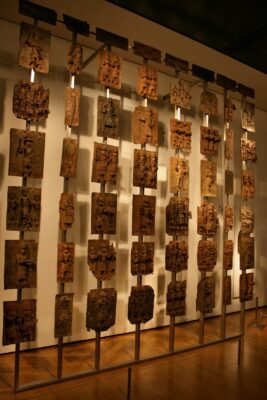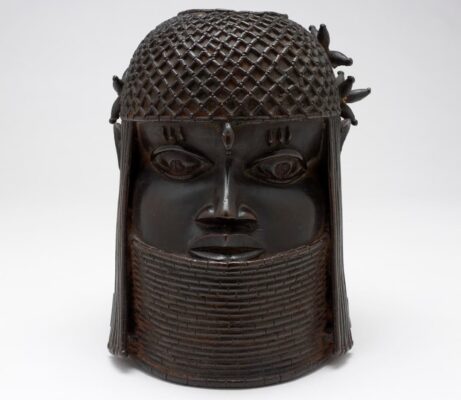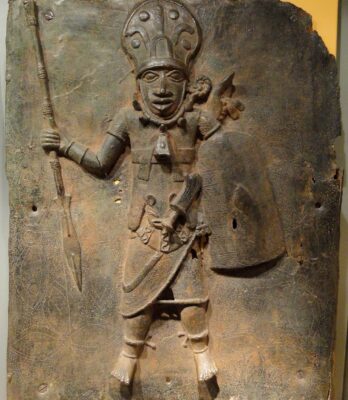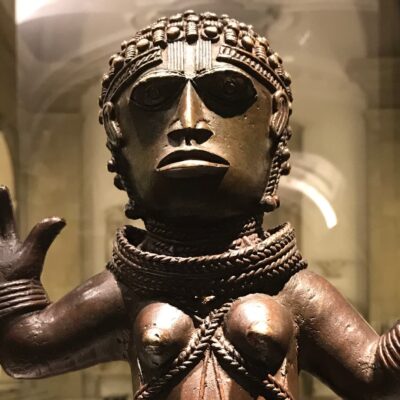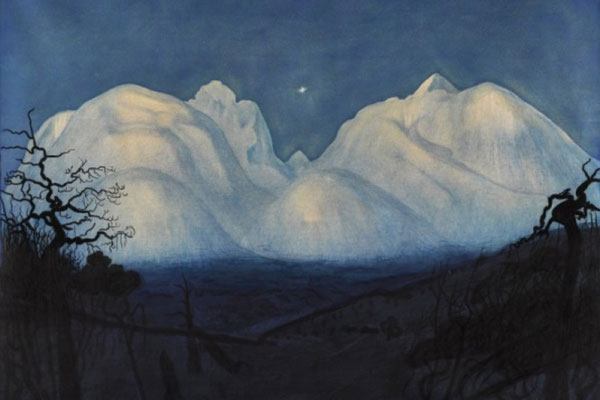Benin Bronzes: A Long Journey Back
por G. Fernández – theartwolf.com
Chronology of the plundering of the Benin Bronzes, and the long struggle for their repatriation
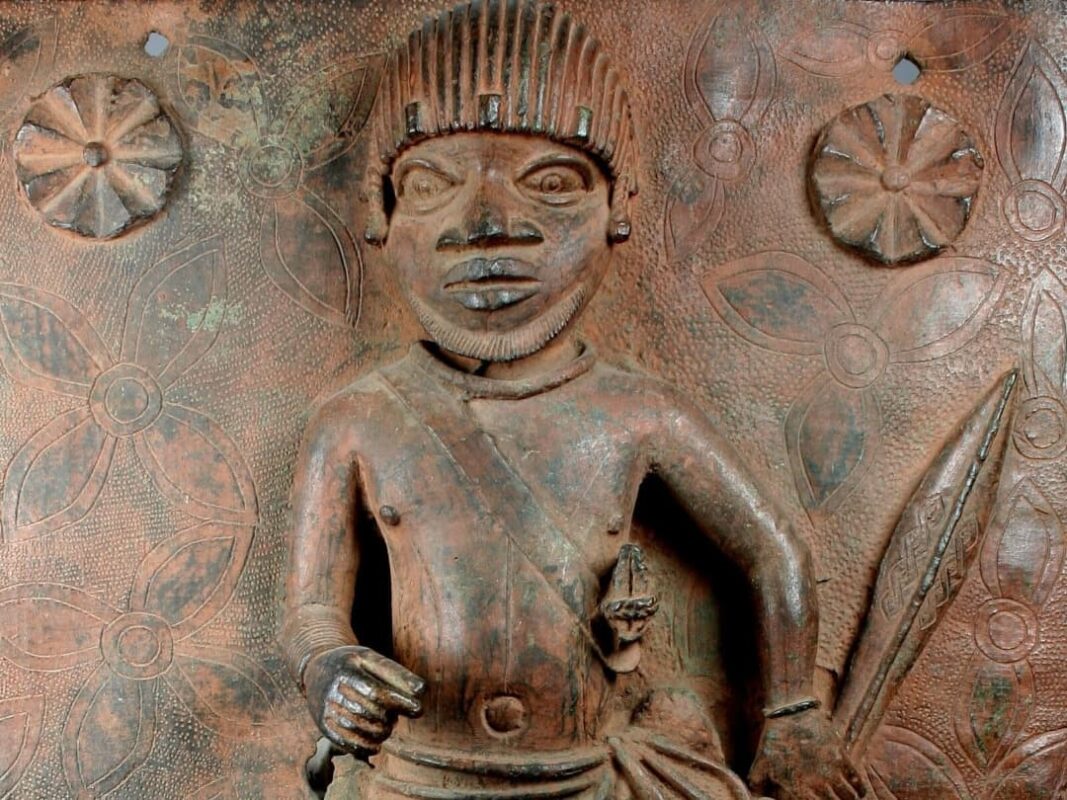
Image courtesy of the Metropolitan Museum of Art, New York.
The debates and controversies surrounding the provenance of many of the works of art on display in some of the world’s leading art museums are by no means a recent topic. Perhaps the longest running and most talked about is the possible return to Greece of the Parthenon Marbles (the ‘Elgin Marbles’), whose presence in England has been the subject of controversy almost since their removal from Greece in the early 19th century. In 1812, after seeing the recently plundered Parthenon on one of his voyages through the Mediterranean, an outraged Lord Byron wrote:
Dull is the eye that will not weep to see
Lord Byron
Thy walls defaced, thy mouldering shrines removed
By British hands, which it had best behoved
To guard those relics ne’er to be restored.
Curst be the hour when from their isle they roved,
And once again thy hapless bosom gored,
And snatch’d thy shrinking gods to northern climes abhorred!
Debates over the repatriation of ancient Egyptian artefacts are also long-running, with the famous Bust of Nefertiti having been claimed by Egypt since the work was unveiled in Berlin in 1929. More recently, in 2003 Zahi Hawass demanded the return of the Rosetta Stone, now in the British Museum. To date, neither of these two requests have been granted, and the few cases of artifacts returning to Egypt have occurred when it has been proven that such works have been looted in recent times, such as the case of the sarcophagus returned in 2019 by the Metropolitan Museum in New York. Special mention should be made of the Mummy of Ramses I, now on display in Luxor, and returned in 2003 by the Michael C. Carlos Museum in Atlanta.
Controversy has also dogged several pre-Columbian artefacts, with Colombia demanding the return of the Quimbaya Treasure, given to Spain in 1893; Asian works of art, for example the Old Summer Palace bronze heads, stolen in 1860 and which have been appearing on the market in recent decades, and of course the return of paintings stolen or forced to be sold by the Nazis, with such notable cases as the Gustav Klimt paintings returned to Maria Altmann in 2006, culminating in the sale of “Adele Bloch-Bauer I” for a then record $135 million.
Until relatively recently, an important group of artworks with a more than questionable provenance had remained relatively away from these debates: the Benin Bronzes.
Between the 14th and 19th centuries, the Kingdom of Benin, in the south of present-day Nigeria, saw the flourishing of an artistic style unique in sub-Saharan Africa, much more naturalistic than other works of art on the continent, such as those of the Fang or Senufo cultures. In the Oba’s palace, the artists of the Edo people created over a thousand metal plates and sculptures, usually made of bronze or brass, which attracted the attention of early European explorers and were praised in the book ‘Description of Africa’ published in 1668 by Olfert Dapper. At the end of the 19th century, the United Kingdom sent troops to Benin with the aim of incorporating the kingdom into the British Empire, and began the story of a plundering and a long journey to return the looted pieces.
Image: Several of the Benin Bronzes on display at the British Museum. Photograph by Mike Peel.
Chronology of the long journey to return looted Benin Bronzes
1897: Following the “Benin Massacre”, in which General James Phillips and his men were ambushed and killed by Oba warriors (only two soldiers survived), British Army troops, commanded by Sir Harry Rawson, carried out the Punitive Expedition, destroying the earth walls of Benin, massacring the Oba warriors (and civilian population), and looting almost all the artworks inside the walls.
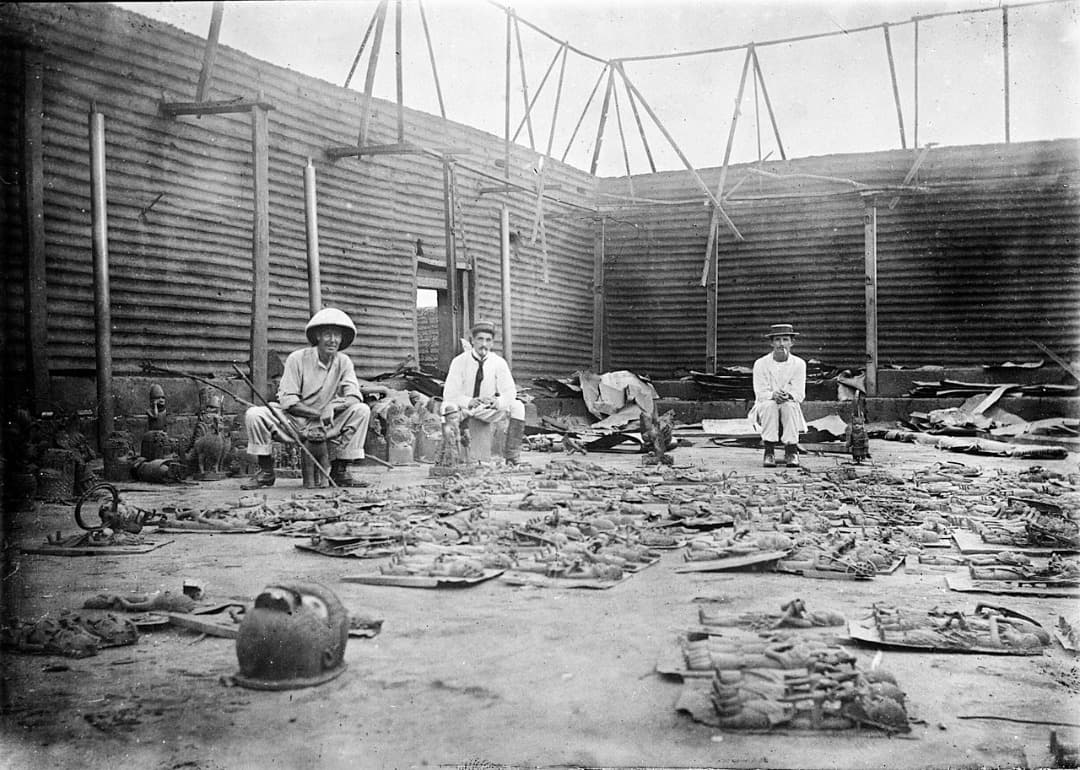
Photograph by Reginald Granville.
The bronzes were taken to the United Kingdom, and in subsequent years were divided into several collections, the most important group going to the British Museum (700 works) and to several German museums. Some of them were sold to private collectors.
1960: Independence of Benin (August) and Nigeria (October).
1968: Plans are announced for the construction of a National Museum in Benin City. A growing number of scholars call on museums in Europe and the United States to donate works to the Benin museum, among them Ekpo Eyo (see Barbara T. Hoffman’s “Art and Cultural Heritage: Law, Policy and Practice“), later a professor at the University of Maryland, who in September 2002 asked Buckingham Palace to return the Benin bronze head that was taken from the National Museum in Lagos and given to the Queen of England in 1973.
November 1996: Bernie Grant, MP for Tottenham, chairman of the African Reparations Movement, and supported by the West African Museums Programme, calls for the return of the 21 Benin bronzes from the Glasgow Museums collections. In January 1997: the request is rejected, despite a formal request from the State of Benin.
2007: the “Benin Dialogue Group” is formed, consisting of staff from Western museums and authorities from the Nigerian Government, the Royal Court of Benin and the National Commission for Museums and Monuments of Nigeria, with the aim of discussing the restitution of West African art and in particular the Benin Bronzes.
June 2012: The Museum of Fine Arts in Boston receives a collection of more than 30 pieces from Benin, a gift from Robert Owen Lehman. Immediately, the National Commission for Museums and Monuments of Nigeria asks the American museum to return the works. The request is not granted, but two years later, the museum agrees to return nine pieces to Nigeria.
November 2018: Emmanuel Macron announces that France is preparing a plan to return a large part of the country’s African artworks, including 26 pieces from the Kingdom of Benin. On the other hand, protesters demand the Rhode Island School of Design to return a “Head of a King (Oba)” from its collection, acquired from the Knoedler Gallery in 1935. In 2020, the work is removed from the collection.
Image: Head of a King (Oba). Rhode Island School of Design
December 2018: The British Museum agrees to temporarily return some of the bronzes to Nigeria, but without offering an answer to the growing number of voices calling for the full return of the works.
March 2021: The University of Aberdeen announces that it will return the only Benin Bronze in its collection.
April 2021: In a move described as “historic”, Germany announces that it will repatriate all the Benin Bronzes in its collections. The Ethnologisches Museum in Berlin currently holds the second largest collection of Benin Bronzes in the world, with 580 pieces, second only to the 700 works in the British Museum. Both the Museum für Völkerkunde in Hamburg and the Staatliches Museum für Völkerkunde in Desde are among the five most important collections of Benin Bronzes in the world. In addition, the National Museum of Ireland announced the return of 21 items to Nigeria, while the Church of England does the same with two items from its collection.
Figure of a warrior, Staatliches Museum für Völkerkunde, Munich ·· Female figure, Bode Museum, Berlin
June 2021: The Metropolitan Museum announces that it will return three works of art to Nigeria. Two of them, “Warrior Chief” and “Junior Court Official”, were, according to the museum, “among the works removed from the Royal Palace in 1897 during the British military occupation of Benin”, and were donated to the Met in 1991.
Looking to the future
As might be expected, all eyes are on the British Museum, which has, as mentioned, the largest collection of Benin Bronzes in the world. The museum has a special section on its website dedicated to the provenance and the discussions about the bronzes, in which it states that “while no formal written request has been received for the return of the Museum’s Benin collections in their entirety, the Benin Royal Court has made various public statements asking for Benin collections to be returned“, without giving a specific answer on the Museum’s position, stating that “the Museum is committed to active engagement with Nigerian institutions concerning the Benin Bronzes, including pursuing and supporting new initiatives developed in collaboration with Nigerian partners and colleagues“.

A large part of the restituted works is expected to be exhibited in the Edo Museum of West African Art (EMOWAA), designed by David Adjaye. The building, which is still at the planning stage, could become the great testimony to the greatness of the former kingdom of Benin.
Imagen: Edo Museum of West African Art (EMOWAA), designed by David Adjaye. Image © David Adjaye
Follow us on:

